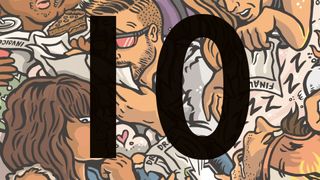A solid contract is your best defence against the unscrupulous, and it aligns expectations and answers critical questions. But while you might be an expert at responsive web design or vector art, when it comes to the technicalities of contracts it's all too easy to get confused.
Never fear, though; here's our guide to the 10 things that ought to be covered in every contract. A quality contract should address:
01. The terms of your estimate
Describe your service or product as exactly as possible. Down payment information and an invoicing schedule should accompany your estimate. You need to clarify if elements like fonts or images are part of that cost, or if they need to be approved for purchase by the client first. Rush fee terms, taxes, and any other additional costs should be clarified too – as should the expiration date for the estimate.
02. Timelines
Spell out deadlines and communicate how long your turnaround times will be to align expectations and clarify who's responsible for what, when.
03. Revisions
How many revisions does your estimate accommodate? Three is a solid number, but some designers charge extra for each revision.
04. Feedback and approval
Does the client need to physically sign off on each milestone, or will an email confirmation be sufficient? Are hard copies necessary? And who is the main point of contact for this stuff?
05. Rights
Clarify if the piece can appear in your portfolio, and if the rights to a piece of work can be resold at a later date.
06. Confidentiality
Acknowledge that you and your client will not make any private information public during (or even after) the working engagement.
07. Guarantees and warranties
If there's an issue with your work down the line – say, a website breaks, or there's a spelling error in the final brochure – what are your obligations to the client? How long is your work guaranteed, and how much will the client need to pay if they need help beyond this period?
08. Client-freelancer relationship
In addition to clarifying that you're a contractor and not a regular employee, your contract should outline when and where you will complete your client's work. Do you need to be on-site, or are you working from home?
09. Termination terms
How much pay are you entitled to if the job is cancelled? If that happens, who owns the rights to the work? There are a lot of questions that need answers should the contract be terminated for any reason.
10. Disputes
In case of a dispute, how will you and your client handle it? Third-party involvement and who is responsible for legal fees may be outlined in this section.
Illustration: Mat Roff
This article originally appeared in Computer Arts issue 257; buy it here!





